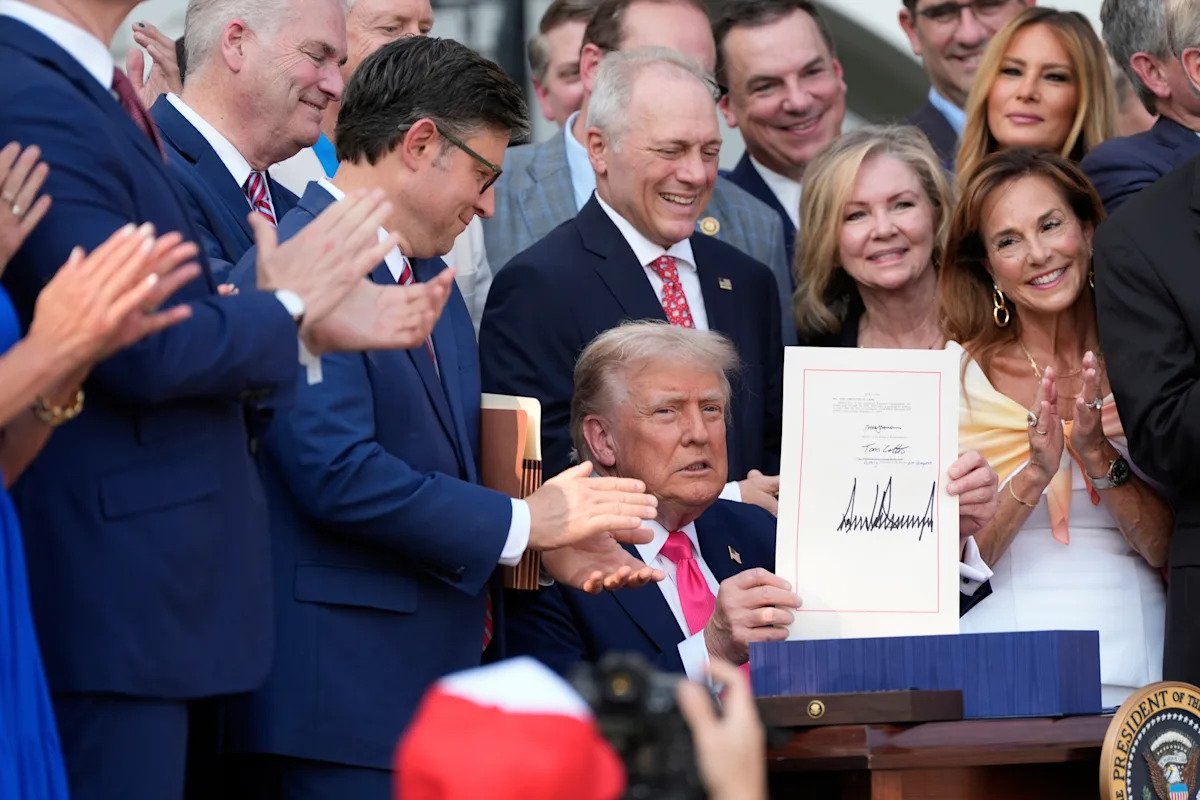Breaking News
Here’s how the new Trump accounts work — and why financial experts don’t love them

Pretty soon, every newborn American will be the proud owner of their very own “Trump account.”
President Trump’s sprawling tax law creates a new, tax-advantaged investment account prefunded with $1,000 for each child born from the beginning of 2025 through the end of 2028. Kids born before this year are eligible for the IRA-style accounts but not the $1,000 seed money.
The idea’s backers say the accounts are a way to get all kids into saving and investing early in life, while helping them save for goals like college or a home.
Learn more: How to start investing: A 6-step guide
But financial advisers who spoke with Yahoo Finance warned that, aside from the free seed money, the benefits the accounts offer are relatively paltry compared to other tax-shielded savings options Americans already have available, including the 529 accounts parents use to put away money for college and IRAs for retirement. The new Trump accounts also come tied up with a fairly complex and potentially confusing set of rules.
As a result, putting any money into them beyond what the government offers might not make sense for most families, they said.
“It’s not very attractive,” Ann Reilley, CEO of Alpha Financial Advisors, said of the program. “It just seems like they’re complicating things for no reason.”
Under the new program, parents will have the option to open Trump accounts for any child under age 18 at a bank of their choice. Contributions will be capped at $5,000 per year, including up to $2,500 tax-free from a parent’s employer. The money grows tax-free until it’s withdrawn and must be invested in a broad stock index.
Account holders can make partial withdrawals when they turn 18 and access the full amount at age 25, but only for “qualified purposes” including paying for college, starting a business, or buying a first home. They get full access to the funds at age 30 to use for any purpose.
Read more: How much should I save before going to college?
Once cashed out, distributions will be taxed as long-term capital gains if the funds are used for a qualifying purpose. Money spent on anything else will be treated as ordinary income.
Overall, it’s a less generous deal than putting money into a 529 account for higher education or Roth IRA for retirement, since both of those options allow investors to withdraw their money entirely tax-free.
Learn more: Which is better — a Roth IRA or a savings account?
The Trump account could theoretically be useful for families who are already comfortable with their retirement savings and whose children don’t plan to pursue college, since the money can be used for other purposes like homebuying without a penalty. But even then, there might be pitfalls.
For instance: Say a child ends up spending the money on anything other than education, a business, or a house and gets hit with the higher ordinary income rate. In that case, their family would have been better off investing in a normal brokerage account, said Zach Teutsch, a managing partner at Values Added Financial.
“The giving kids money aspect is generally good,” Teutsch said. “The account structure seems ill-considered.” He added that a family would need to be “shockingly sure” that their child wasn’t going to college before it would make sense to invest in a Trump account instead of a 529.
The concept of providing every child a small, prefunded investment account isn’t new in Washington. Progressives have long-pitched a version of the idea known as “baby bonds,” which they’ve argued could help close the racial wealth gap. Among Republicans, Texas Sen. Ted Cruz is credited for originating the Trump account proposal — he called them Invest In America Accounts — which he has described as a way to help hook kids on investing and broader capitalist values.
“There are many Americans who don’t own stocks or bonds, are not invested in the market, and may not feel particularly invested in the American free enterprise system. This will give everyone a stake,” Cruz recently told Semafor.
The experiment is not especially expensive in the scheme of the GOP’s massive tax package: Trump accounts will cost the government about $17 billion over 10 years, according to Congress’s Joint Committee on Taxation. But Republicans appear to have kept costs down in large part by loading the proposal with restrictions that limit the value of the program, said Alan Cole, a senior economist at the Tax Foundation.
“It’s like, thank you, government, for the free money, but I care about the usefulness,” Cole said. “And realistically, this is the sixth or seventh best tax-free savings account option.”
Jordan Weissmann is a Senior Reporter at Yahoo Finance.
Sign up for the Mind Your Money newsletter
Click here for the latest personal finance news to help you with investing, paying off debt, buying a home, retirement, and more
Read the latest financial and business news from Yahoo Finance
